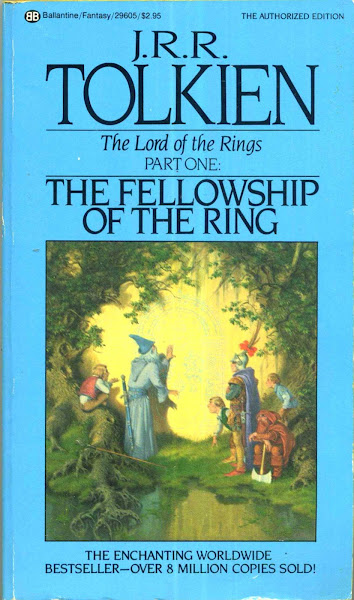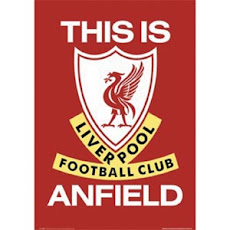 This appears in the Monday March 8 edition of the Business Mirror. The picture above is Gilas in Serbia.
This appears in the Monday March 8 edition of the Business Mirror. The picture above is Gilas in Serbia.
Smart Gilas Pilipinas Year One
Part 1: The Thousand-Mile Journey
by rick olivares
Inside the dugout of the Smart Gilas Men’s National Basketball Team at the Al Ahli Club in Dubai, the atmosphere was festive as the team celebrated their third place finish in the 21st Dubai International Tournament. The Nationals beat the import-laden Al Jalaa Syria 107-98 to repay them for their opening day loss that touched off an incredible comeback that saw them come within four points of making the finals.
Head Coach Rajko Toroman was being interviewed outside the dugout when Demetric Shaw, one of Al Jalaa’s American imports, came over. Seconds later, Toroman ushered Shaw inside and the room quickly fell silent.
“We were stunned. We didn’t know why Shaw was inside. I thought maybe he was looking for a fight.” wondered team captain Chris Tiu. In the battle for third place, the Filipinos frustrated Shaw with their tough play.
“Tell them what you told me,” said a beaming Toroman.
Shaw, the muscular 6’3” guard out of Kent State University who once scored a FIBA record of 74 points for Halcones in the Mexican League said, “From the beginning of the tournament, you are the only team that played with great pride for your country, incredible passion as a team, and the determination to be better. It was an honor to play against you.”
The room exploded with thunderous applause.
“It was the easiest comment to make.” explained Shaw a few weeks after the tournament. “When I played against them, I felt proud of how they honored themselves and their country with a never-say-die attitude. Mahram was a team of superstars but it was great to see an undersized Philippine team fight with everything they had. And I thank them for reminding me why I started playing in the first place.”
Toroman’s face lit up with elation. After months of hardship, struggle, controversy, and infighting, the third place finish was a clear vindication of the path he and his boys had taken.
It had been 13 months since Gilas’ initial foray into international competition. Year One began with a win and now they closed it out in familiar fashion.
It was the only time in their two weeks abroad that Toroman managed a smile. He exhaled and rejoined the party inside the locker room.
After their Middle Eastern sojourn, the team logged 35,826 miles across eight countries in four continents – China, Serbia, America, Indonesia, Japan, Qatar, and the United Arab Emirates. But they were hardly a Filipino version of the Harlem Globetrotters. They flew in the business class of basketball -- a quixotic quest to regain the country’s lost standing in the world stage of basketball.
The Gilas project closely resembled that of the fabled Northern Consolidated Cement team of the 1980’s. Unlike the NCC team was kept together for six years, Gilas from its inception in November 2008 is a three-year program with the ultimate goal of bagging one of two slots allotted for Asia in the 2012 London Olympics.
To understand that undertaking, one has to realize how the world has changed alongside the fastest growing sports today.
When the Philippines finished 3rd in the 1954 World Championships, the only other Asian country to compete was Formosa (now Taiwan). The last time the Philippines won the FIBA Asia Championship was in 1973 and the Asian basketball powers were China, South Korea, and Japan.
Today, the West Asian countries like Iran, Lebanon, and Jordan just to name a few have become powers in their own right. Korean legend Shin Dong Pa asserts that his country’s decline can be attributed to the American game diluting their style. It’s erroneous considering the world has yet to see a hip-hop slam-dunking Korean brother. The simple truth is -- the rest of the world has caught up.
For Filipinos everywhere, it was something strangely familiar and still a bitter pill to swallow.
When Emmanuel “Noli” Eala, first conceived the Gilas Project, he was still Commissioner of the PBA. The RP-San Mig National Team that competed in the FIBA Asia Tokushima games of 2007 was the vanguard of that dream. But after the disappointing eighth place finish, the team was disbanded and the PBA said no to another pro-laden team.
However, Eala had a back up plan. When he replaced Patrick Gregorio as the Executive Director of the fledging SBP, he secured approval for the formation of a team of collegiate stars aided by a sprinkling of Fil-foreigners and one naturalized player. “The only way we could pull this off was to keep a team together for a three-year period, teach them the proper skills, and learn the international game by playing abroad.” opined Eala.
Unlike NCC that started out with eight Americans and Fil-Ams, Gilas had only three – Joey Deas, a 5’11” point guard out of Rockhurst College in Kansas City, Terrell Theophile, a 6’7” forward from NAIA school St. Gregory’s University, and Gregory Slaughter, the University of Visayas Lancers’ massive 6’11” center by way of Fredericksburg, Virginia.
The other members of the squad were San Beda College’s Ogie Menor, the University of the East’s Marcy Arellano, the University of Santo Tomas’ Dylan Ababou, the University of the Philippines’ Martin Reyes and Magi Sison, and Far Eastern University’s Mark Barroca, Marnel Baracael, and JR Cawaling.
At that point Jayvee Casio and Jason Ballesteros who had already graduated from college, were mulling over the invitation to join Gilas while playing in the PBL.
The team’s first strength and conditioning coach was Dan Rose. Albert Gerald Rolle, the team’s current Physical Therapist who also works in that capacity for the Adamson Falcons in the UAAP, was loaned from the Women’s National Team.
With only two weeks of practice, Gilas went to China to compete in the 1st ASEAN CBO Men’s Invitational Basketball tournament in the southern province of Guangxi. They swept all five of their matches including a pulsating 76-72 win over host China en route to the championship.
“That was my first time to be in the national team,” remembered Sison. “When we won, I told myself, ‘What a way to start.’”
“I didn’t think we’d win this fast but we did.” noted Toroman. “It was a great start. But the competition really wasn’t that good. We told ourselves, we will not come back again.”
Gilas won in its baptism of fire but that didn’t deter critics from continuing their broadsides on the team.
Part of the criticism was directed at the hiring of Toroman who was known for having turned Iran’s basketball program around with a FIBA Asia Championship and a Beijing Olympics berth. Previously, he served as an assistant coach in the last united Yugoslavian national team that had future NBA stars like Vlade Divac, Toni Kukoc, Predrag Danilovic, and Dino Radja.
The issue, according to the Basketball Coaches Association of the Philippines, wasn’t the person but the position. “There are more than many qualified Filipino coaches,” they said. But the SBP defended the move. “We all had our chances,” said Eala. “Now is the time to try something else.”
The three-year plan was contingent on signing up top college stars but getting them to sign wasn’t easy. Rico Maierhofer and Menor opted to join the PBA Draft and the decision to pay its players wasn’t received well by many who argued that a salary meant they were no longer amateurs but pros. “We needed to keep them in the program or else we’d lose them to the PBA,” explained Eala.
Former Ateneo team captain Chris Tiu was abroad at the time of the tournament in China. Like most of his teammates, he needed time to think things over. “In the end, I was convinced of the noble idea of trying to bring the country back to a level of prominence,” reflected Tiu. “It’s going to be very difficult but we have to try.”
Barroca on the other hand needed no convincing. As soon as he received the letter of invitation, he attended the tryouts: “Dream ng lahat ng basketbolista maglaro para sa national team. Malaking karangalan yan.”
Ballesteros recalled being disinterested. His coach in the PBL was Allan Gregorio who joined Gilas as an assistant coach, and he egged Ballesteros: “Give it a try. If you don’t like it don’t go back.” The lanky forward-center went and never left.
The team that competed in China was rebooted and new faces like FEU’s Aldrech Ramos, Letran’s RJ Jazul and Rey Guevarra, and Ateneo’s Rabeh Al-Hussaini, Ford Arao, and Ryan Buenafe joined in. Also on board were assistant coaches Jude Roque and Djalma Arnedo as well as former tennis star turned world-class strength and conditioning coach Jim Saret.
The next task was to recruit a foreigner who would be naturalized.
Despite Toroman’s ties to the old continent, it was decided to acquire the services of an American. “The top Europeans are all playing with big clubs and we will not be able to afford them,” said Toroman. “They have many quality players in America. We just have to find the right one.”
Next: The Fundamental Truths
--------------
My thoughts: Writing about the national team isn't easy. Our culture especially with regards to sports journalism isn't anywhere near the West's. If you ask me, I really wanted to write the whole story of the team after 2012. That way, we can really tell it the way it should be. Unexpurgated too! On the other hand, there's a dearth of stuff about them save for the standard PR. So the series will answer some questions but leave others dangling. Why? For the simple reason that it isn't over and I am not sure how it will turn out.
In writing this, I did extensive interviews with a lot of people. Thanks to Demetric Shaw for his honesty and willingness to share his thoughts. To SBP and Gilas officials and to the players. This is just Part 1. The original draft of Part 1 ran up to eight-plus pages. But within the finite space of a newspaper -- and I already have a lot of leeway with Business Mirror -- it was impossible so I had to remove stuff. Perhaps another time? In the meantime, hope you like it.
 This appears in the Monday March 8 edition of the Business Mirror. The picture above is Gilas in Serbia.
This appears in the Monday March 8 edition of the Business Mirror. The picture above is Gilas in Serbia.








The first and only Filipino who ever played in the NBA was Raymond Townsend! He was selected in the First Round of the NBA Draft by the Golden State Warriors! He played from 1978 to 1982. He is 50% Filipino. His mother is a pure Filipina who hails from Batangas!
ReplyDeleteThe first and only Filipino who ever played in the NBA. In... fact, the First Asian who played in the NBA, way ahead of Yao, Yi, and other asians.
In fact, a Filipino is the first and only asian who ever coached (Head Coach at that) for an NBA Team. He is Eric Spoelstra. The current Head Coach of Miami Heat!!! The first and only asian who ever coached (Head Coach) in an NBA Team.
Wonder what these two have in common? They are proud Pinoys!!!!!!!!!!!!!!!!!!!!!!
May this serve as an inspiration to the players, coaching staff and execs of Smart Gilas Pilipinas...Show the rest of the world the Pinoy Heart!!!!!!!!!!!!!
See More